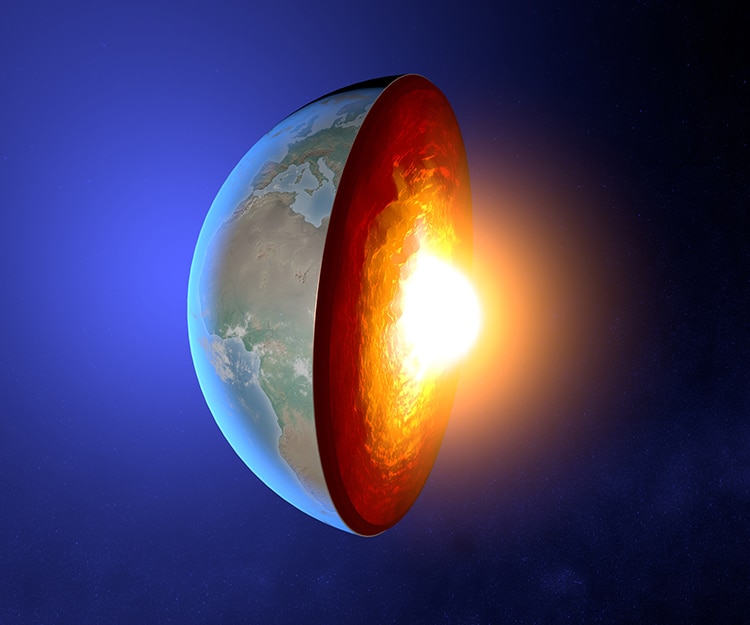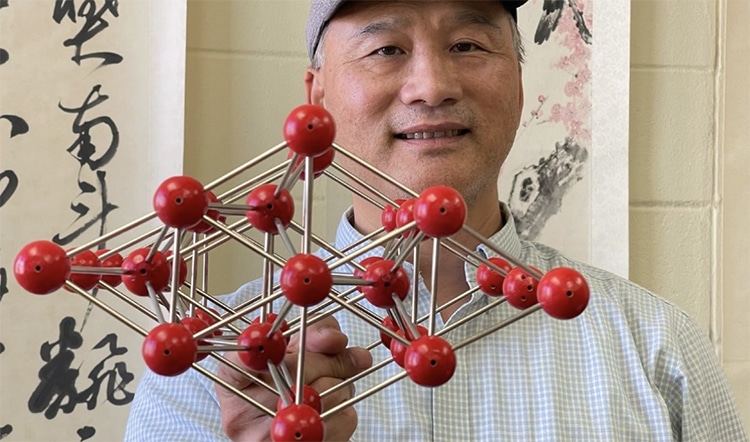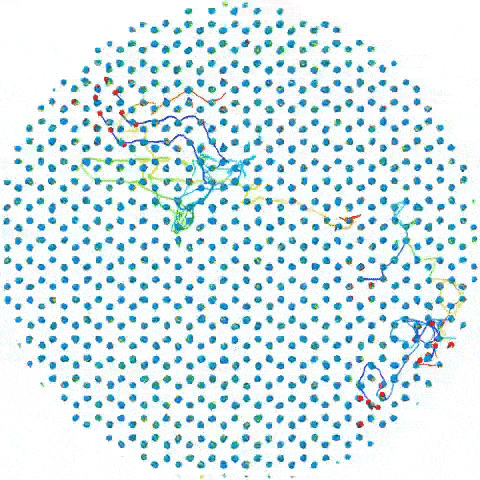An artist’s conception of Earth’s interior structure.
(Photo: VAMPY1/Depositphotos)
Earth has four (simplified)layers, like a giant celestial onion.
Outside is the solid crust upon which we walk.

An artist’s conception of Earth’s interior structure. (Photo: VAMPY1/Depositphotos)
Under that shifts the caramel-consistency of the mantel, which is made of iron, magnesium, and silicon.
Then, there is the center, which has an inner and outer core.
The outer core is liquid metal, whereas the inner core has long been referred to as solid.

Jung-Fu with a model hexagonal iron atom lattice. (Photo:Jung-Fu Lin/UT Jackson School of Geosciences)
The inner core is mostly ancient iron, held together in a 760-mile diameter ball by extreme pressure.
Its iron atoms are arranged in a hexagonal lattice.
This new paper suggests a convincing theory.

Model of how atoms move around a supercell. (Photo:Jung-Fu Lin/UT Jackson School of Geosciences)
They called this model a supercell.
Within it, the model showed atoms moving about, changing places while still maintaining the overall hexagonal structure.
This game of molecular musical chairs is known as collective motion.
Its discovery explains a lot about the interior of our planet.
This increased movement makes the inner core less rigid, weaker against shear forces.
Jung-Fu with a model hexagonal iron atom lattice.
Model of how atoms move around a supercell.